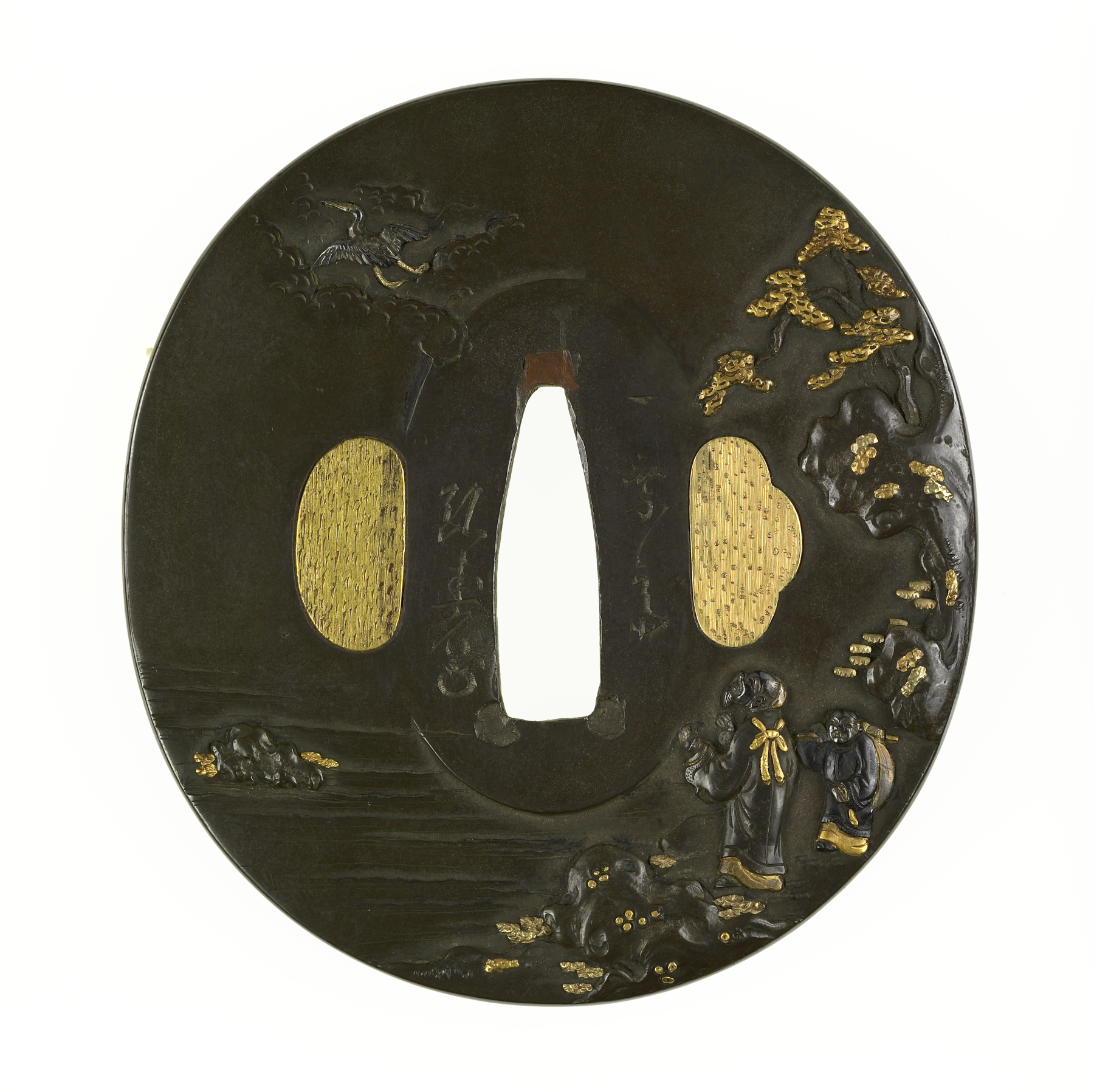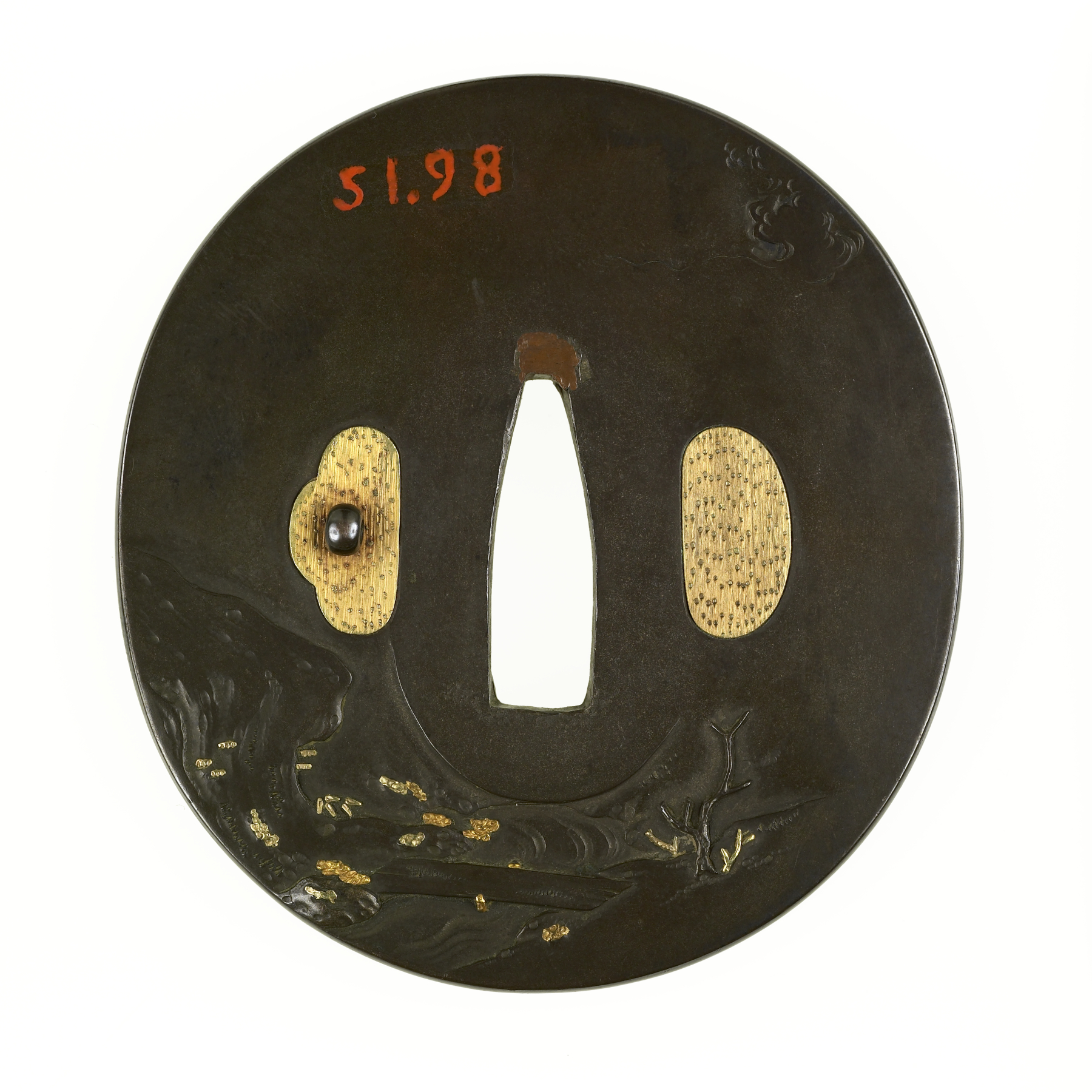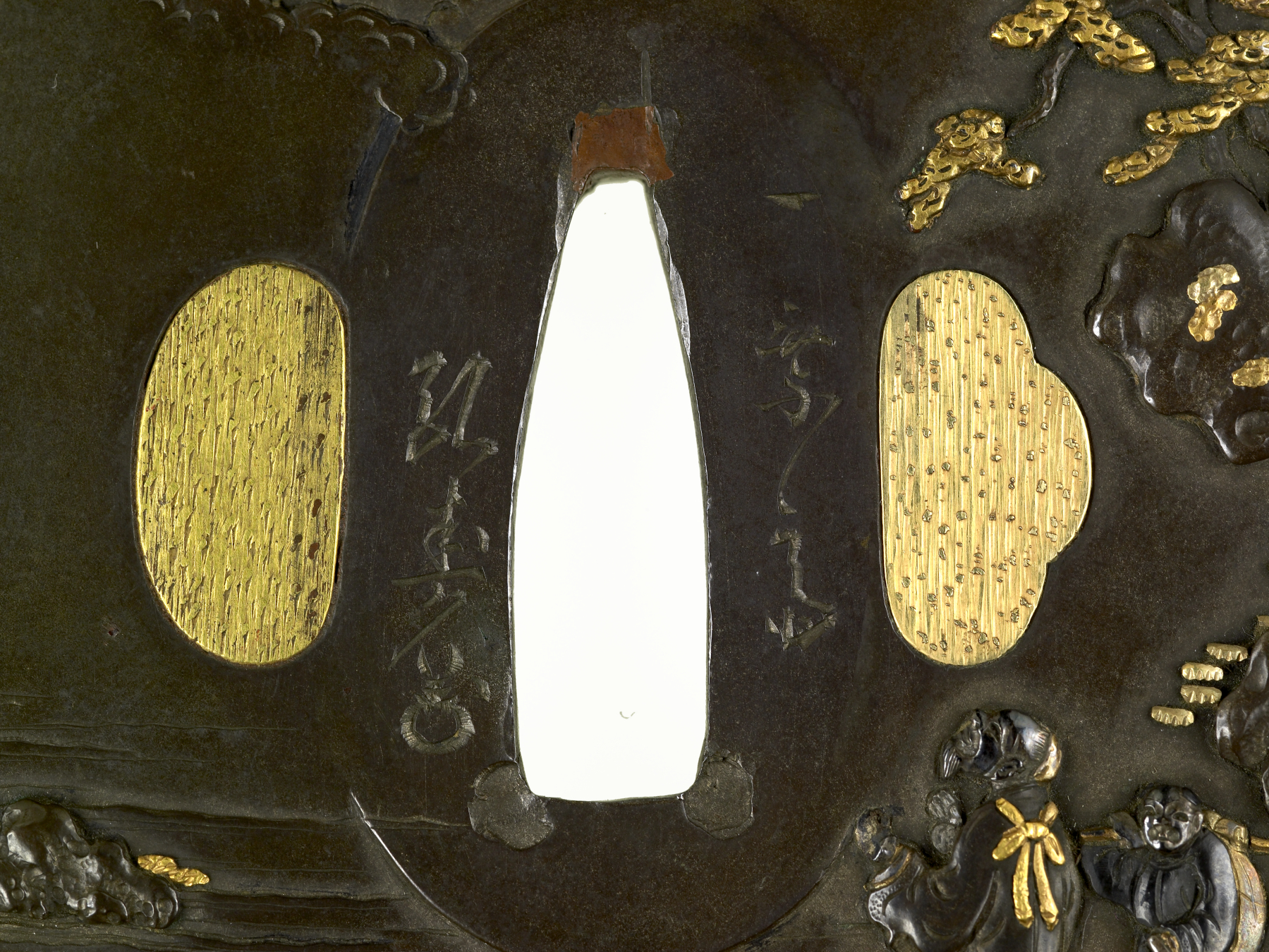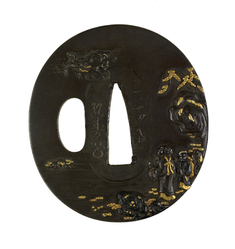Tsuba with an Immortal Seeing a Flying Crane
(Japanese Military Armor)
On the lower right of the tsuba stand a Chinese immortal and his attendent. A crane flies across the upper left. Cranes are a symbol of longevity. This sage may be Kangai, who is often shown with a crane. On the reverse is a bridge crossing a stream. Both secondary holes have been plugged. The composition of this tsuba is almost identical to another in the collection by Hirotoshi (Walters 51.193).
Inscription
Provenance
Provenance (from the French provenir, 'to come from/forth') is the chronology of the ownership, custody, or location of a historical object. Learn more about provenance at the Walters.
Henry Walters, Baltimore [date and mode of acquisition unknown]; Walters Art Museum, 1931, by bequest.
Geographies
Japan, Tokyo (Edo)
(Place of Origin)
Japan, Mito (Place of Origin)
Measurements
2 15/16 x 2 11/16 x 1/8 in. (7.4 x 6.8 x 0.39 cm)
Credit Line
Acquired by Henry Walters
Location in Museum
Not on view
Accession Number
In libraries, galleries, museums, and archives, an accession number is a unique identifier assigned to each object in the collection.
In libraries, galleries, museums, and archives, an accession number is a unique identifier assigned to each object in the collection.
51.98







